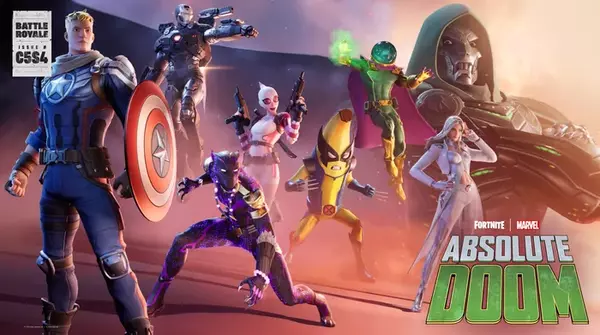Introduction
Since its release, Fortnite has stood out as a cultural phenomenon, revolutionizing the battle royale genre with its building mechanics, frequent updates, and a distinct emphasis on cosmetic items. However, one of the most debated issues in the Fortnite community is the influence of the in-game economy on gameplay. Specifically, there is ongoing discussion about whether certain cosmetic items—especially skins, gliders, and pickaxes—give players an unfair advantage. Although Epic Games has consistently maintained that Fortnite’s items are purely cosmetic, some players argue that the design, size, and animations of certain skins and accessories can impact visibility, perception, and even gameplay performance.
In this article, we will dive deep into the in-game economy of Fortnite, exploring how cosmetic items potentially affect gameplay, the balance between accessibility and pay-to-win concerns, and the broader implications of Fortnite’s monetization model.

Cosmetic Items: Aesthetic or Advantageous?
One of Fortnite’s biggest selling points is its vast array of cosmetic items that allow players to personalize their in-game avatars. From character skins to back blings, gliders, and emotes, Fortnite offers players endless options to express their individuality. But while these items are meant to be purely aesthetic, some players feel that certain designs provide distinct advantages.
H3: Skins and Character Visibility
Many players argue that some skins are harder to see in certain environments. For instance, darker or camouflaged skins can blend into shadowy or heavily vegetated areas, making it more difficult for opponents to spot them from a distance. Skins like “The Reaper” (often referred to as John Wick) or other sleek, minimalist designs can make it harder for enemies to track movements compared to bulkier, more colorful skins like “Peely” the banana.
H4: Hitboxes and Skin Perception
Epic Games has stated that all skins have the same hitboxes—meaning that the area that can be hit by bullets is uniform across all character models. However, the visual perception of a character’s hitbox can vary based on the size and shape of their skin. Players wearing large, bulky skins like “Thanos” or “Brutus” may feel as if they are easier targets, even though their actual hitbox remains the same as smaller skins like “Aura” or “Zadie.” This visual perception can influence how players engage in combat, leading some to favor smaller, more inconspicuous skins.
Gliders and Audio Cues: Pay-to-Win or Play Fair?
Another key component of Fortnite’s gameplay is the use of gliders, which players deploy when dropping from the battle bus or redeploying mid-match. Gliders not only affect how players descend, but they also emit distinct audio cues that can alert opponents to a nearby landing.
H3: The Impact of Silent Gliders
In the past, some gliders have been criticized for being too quiet, giving players an unfair advantage when landing near opponents. A notable example is the “Founder’s Umbrella,” which was initially quieter than standard gliders. Players using this glider could land close to enemies without being detected, which caused an uproar in the community, as it provided a stealth advantage that wasn’t available to others. Epic Games eventually adjusted the audio to maintain a balance, but the incident highlighted how glider design can inadvertently affect gameplay.
H4: Glider Visuals and Targeting
In addition to sound, the visual design of gliders can also impact gameplay. Larger gliders or those with flashy effects (such as the “Astroworld Cyclone”) can make players more conspicuous during their descent, potentially drawing enemy fire. On the other hand, smaller or more subdued gliders might make it easier for players to land unnoticed. While these differences are minor, they can still affect high-level play, where every small advantage counts.

Pickaxes and Swing Speed: Do Cosmetics Affect Mechanics?
Pickaxes in Fortnite are used for harvesting materials and can be equipped as melee weapons in combat. Though pickaxes are supposed to have the same functionality regardless of their appearance, some players believe that certain pickaxes offer advantages in harvesting speed or combat effectiveness.
H3: The Myth of Faster Pickaxes
A common misconception among players is that certain pickaxes swing faster than others, allowing players to gather materials more quickly. For example, slim, sleek pickaxes like the “Candy Axe” are often perceived to be faster than bulkier ones like the “Axe of Champions.” However, Epic Games has confirmed that all pickaxes have the same swing speed and damage output, regardless of their appearance. Despite this, the perception persists, and some players still prefer specific pickaxes for their feel and appearance.
H4: Tactical Use of Pickaxe Size
The size of a pickaxe can also influence how players perceive its utility in combat. Larger pickaxes can obstruct the player’s view in tight situations, while smaller, more minimalistic designs offer better visibility when gathering materials or engaging in close-quarters combat. As with skins and gliders, these differences are more psychological than mechanical, but they still play a role in player preferences and competitive choices.
The Monetization Model: Balancing Profit and Player Experience
Fortnite’s in-game economy is based entirely on cosmetic purchases, with Epic Games offering a rotating selection of items in the Item Shop, as well as exclusive Battle Pass content. While this model has proven to be immensely profitable, it also raises questions about accessibility and fairness, particularly for players who cannot afford to buy the latest skins or other cosmetics.
H3: FOMO (Fear of Missing Out) and Limited-Time Items
One of the key strategies used by Fortnite to drive sales is the frequent release of limited-time cosmetics. Players who miss out on these items may feel pressured to spend money on V-Bucks to buy them before they disappear from the shop. This creates a sense of urgency, which can be frustrating for those who are unable or unwilling to spend real money on the game.
H4: Free-to-Play Accessibility vs. Exclusive Content
On the other hand, Fortnite’s free-to-play model allows players to enjoy the game without ever spending money. All gameplay features are accessible to everyone, and the only items locked behind a paywall are cosmetic. This makes Fortnite one of the most accessible games on the market, but it also means that players who invest in cosmetics may feel like they have an edge in terms of status or perceived gameplay benefits.
Community Perception of Pay-to-Win Elements
The Fortnite community is divided on whether the game’s cosmetic items offer any real advantages. While many players insist that skins, gliders, and pickaxes are purely aesthetic, others argue that certain designs can influence gameplay in subtle ways.
H3: Casual vs. Competitive Players
Casual players are generally less concerned about the potential advantages of cosmetic items, as their focus is more on having fun and expressing themselves through their avatars. Competitive players, however, are more sensitive to the nuances of hitbox perception, glider sounds, and pickaxe visibility, which can have a greater impact on high-level play.
H4: Professional Players and Cosmetic Choices
Interestingly, many professional Fortnite players gravitate toward smaller, less flashy skins and minimalistic gliders and pickaxes. This suggests that even at the highest levels of play, cosmetics can influence a player’s decision-making process, particularly when it comes to maximizing visibility and minimizing distractions.
Epic Games’ Response to Pay-to-Win Concerns
Epic Games has been responsive to community feedback regarding the potential pay-to-win elements of Fortnite. In several instances, the company has made adjustments to cosmetics that were deemed too advantageous, such as increasing the sound levels of quieter gliders or adjusting the size of certain skins.
H3: Balancing Gameplay and Monetization
Epic Games faces the challenge of balancing its desire to create compelling, sellable cosmetics with the need to maintain a fair and balanced gameplay environment. The company has consistently emphasized that Fortnite is not pay-to-win, and that all cosmetics are designed with fairness in mind.
H4: Future Cosmetic Adjustments
Looking ahead, it’s likely that Epic Games will continue to monitor the impact of cosmetic items on gameplay, making adjustments as needed to ensure that no skin, glider, or pickaxe offers an unfair advantage. This commitment to fairness is crucial for maintaining the integrity of Fortnite as both a casual and competitive experience.

Conclusion
While Fortnite’s cosmetic items are designed to be purely aesthetic, their impact on gameplay is more complex than it appears at first glance. From skins that affect visibility to gliders with varying audio cues, the design of Fortnite’s cosmetics can influence how players engage with the game. Although these differences are often subtle, they can still have a noticeable effect, particularly in high-level play. Ultimately, the balance between aesthetic appeal and gameplay fairness is one that Epic Games will need to continue to refine as Fortnite evolves.


